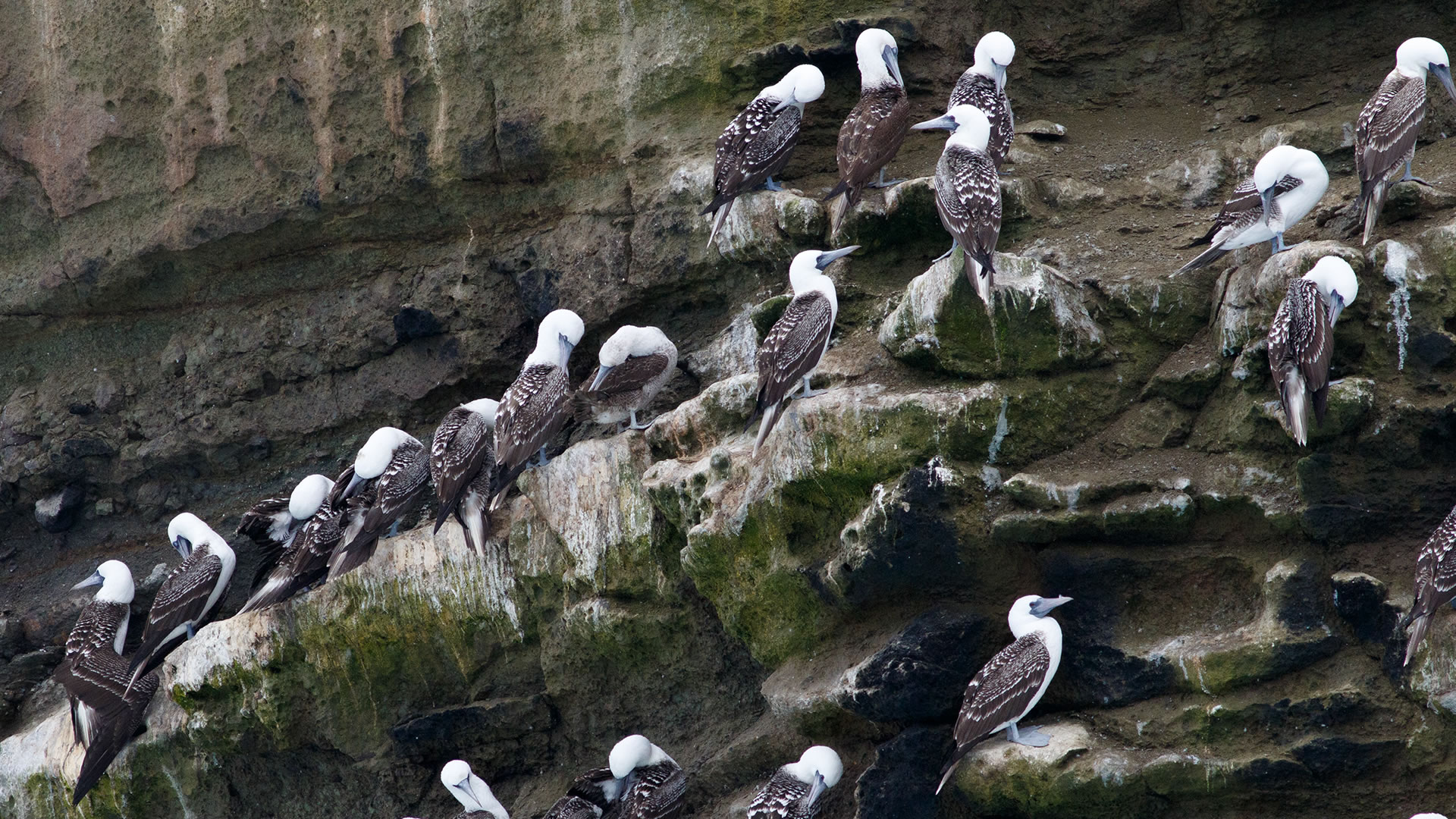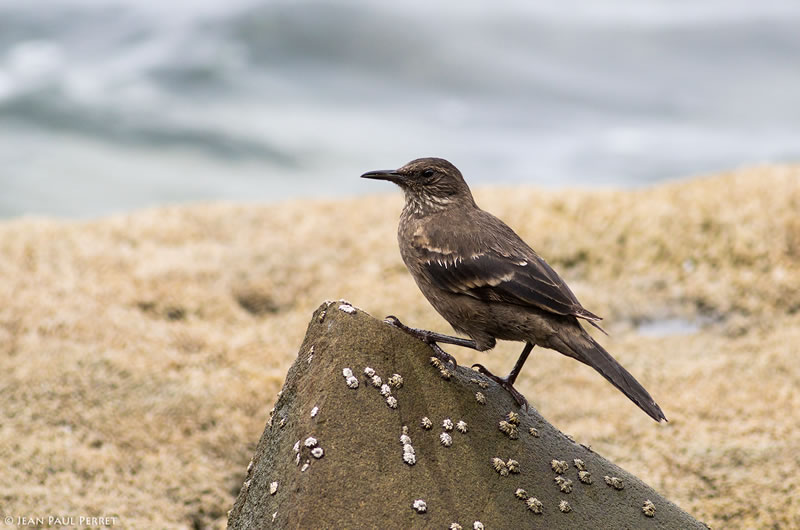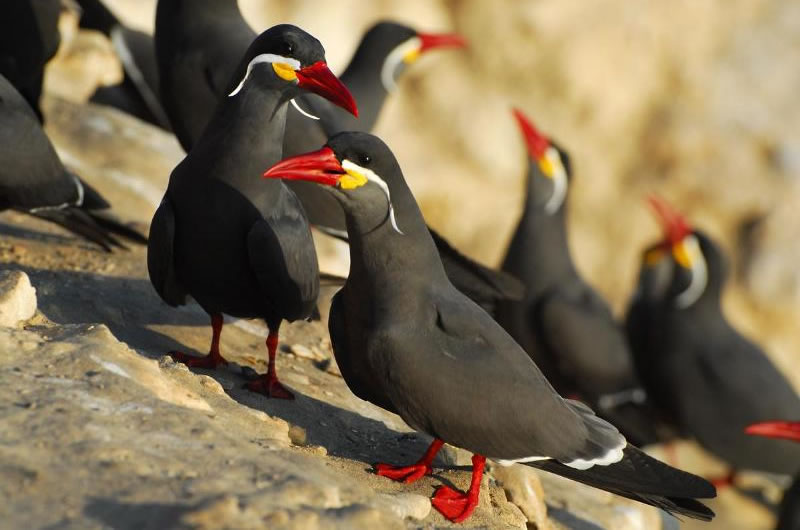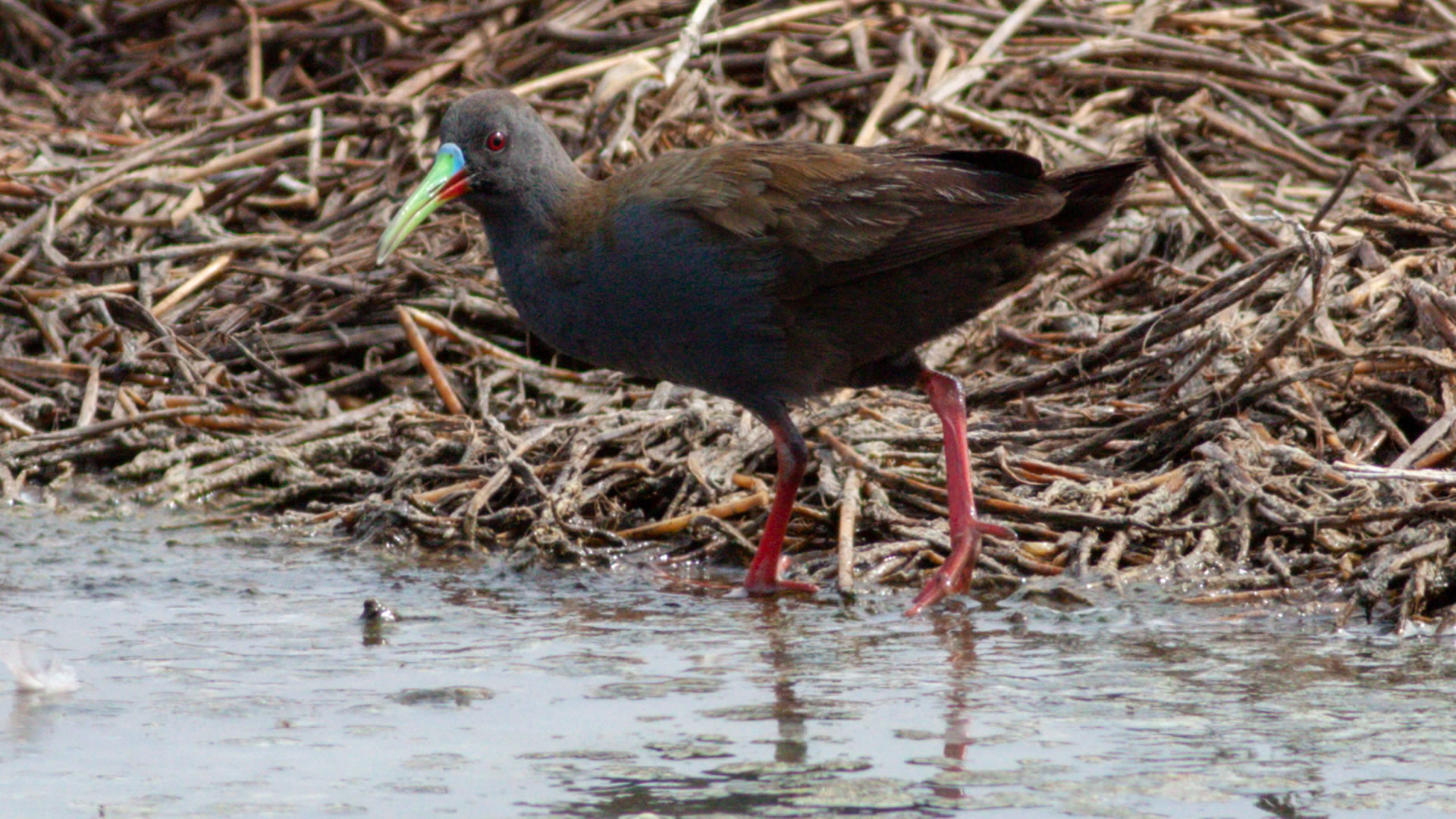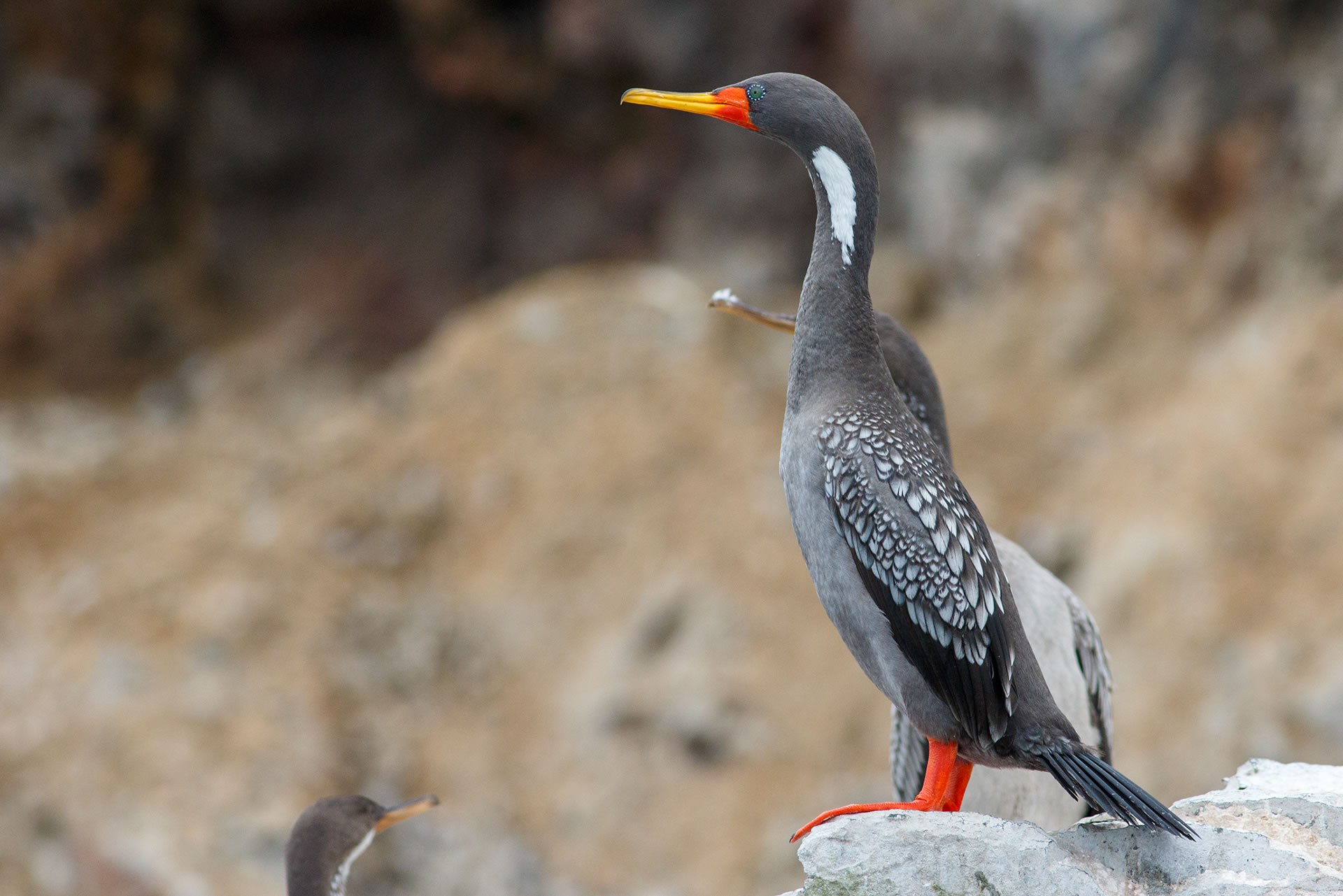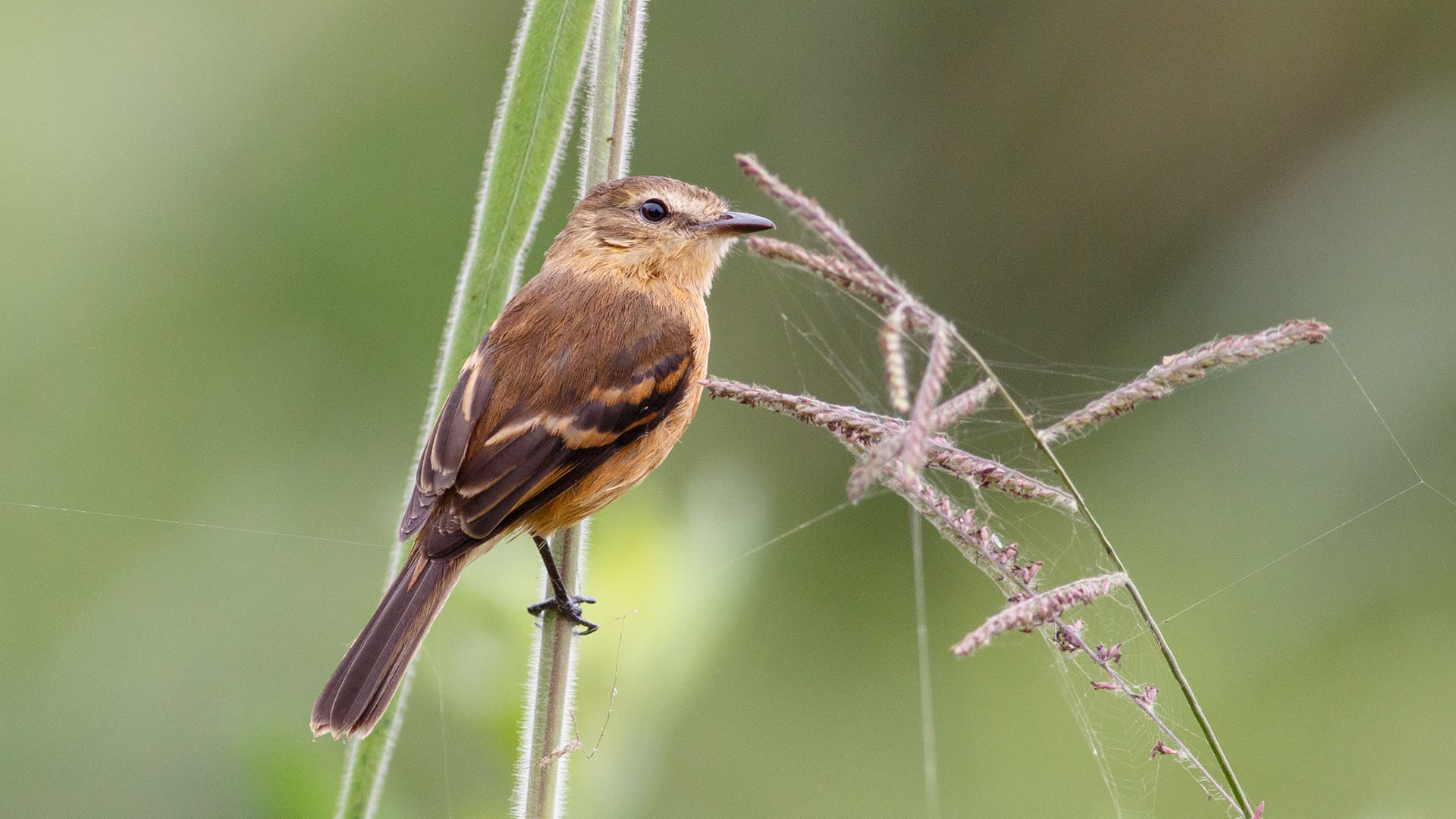Birding in Lima: Villa Wetlands and Pucusana Area
One of the most popular tours for birders that have a spare day in Lima. A full-day that combines water birds and seabirds of Villa and Pucusana.
Pantanos de Villa
We start our tour early in the morning to avoid the rush hour and we head directly to the Pantanos de Villa Reserve. The Villa marshes are the only protected area within the city limits of Lima. It was declared a RAMSAR (International Convention of Wetlands) site in 1997. This complex of lagoons, pools and marsh areas made up of totora reed clumps, are part of a migratory corridor and resting point for several bird species along the Peruvian coast. More than 130 bird species have been recorded here, and at least 40 species can be seen on a single visit.
Plumbeous Rail | © Jean Paul Perret
Our first stop within the reserve take us to a coastal lagoon next to the beach where we will be looking for birds like Great Grebe, Pied-billed Grebe, Cinnamon Teal, White-cheeked Pintail, Andean Duck, Gray-hooded Gull and Gray Gull. Depending on the season sometimes we found small numbers of Andean Gulls in this area. A quick scan from the seashore will allow us to observe species like Peruvian Pelican, Peruvian Boobies, Guanay Cormorants flying by and sometimes even Peruvian Diving-Petrels.
As the day starts to warm up we move to our next location, a group of small ponds surrounded by totora reeds. This vegetation is the habitat of two species, the Many-colored Rush-Tyrant and the Wren-like Rushbird. After seen these targets we’ll try to find some hard to observe birds like Plumbeous Rail and Least Bittern. On the trail back to our car we will stop for a moment to look for Peruvian Thick-knees in an open area covered with grass.
Pucusana
Our next stop is the fishing village of Pucusana, about 60 Km (38 miles) south of Lima. Pucusana is located inside a small cove and protected by an island just in front of the town. From here we will take a boat to navigate the waters around the island where we will have close views of some of the Humboldt current specialties like Peruvian Pelican, Peruvian Boobie, Guanay Cormorant, Red-legged Cormorant, Blackish Oystercatcher, Belcher’s Gull, the endemic Surf Cinclodes, Humboldt Penguins and the stunning Inca Terns.
Red-legged Cormorant@ Jean Paul Perret
Continuing with the navigation we visit a small colony of South American Sea Lions. This rocky coast is also the habitat of the endangered Marine Otter, one of the smallest otter species in the world.
Bran-colored Flycatcher @Jean Paul Perret
After our pelagic trip we will have lunch at a local restaurant. Then we’ll move to our next location at the Lurin River. This area is home to the rufescens subspecies of Bran-colored Flycatcher that might be split in the future. Other species that we can observe in this area includes Croaking Ground-dove, Amazilia Hummingbird, Peruvian Sheartail, Purple-collared Woodstar, Long-tailed Mockingbird, Scrub Blackbird, Harris’s Hawk and Peruvian Meadowlark.
Weather
The Peruvian coast is located in the middle of one of the driest deserts in the world, the Atacama Desert. Despite that, during the winter months (June to November) the atmosphere is saturated with high levels of humidity due to the condensation caused by the cold Humboldt Current. Rains are very uncommon here (except during “El Niño” events), but drizzle is present almost every day during the winter months. Temperatures ranges from 30°C (86°F) during the austral summer (December to March) to 13°C (55°F) from June to November.
Recommendations
- During the winter months (June to November) dress in layers, a windproof jacket, fleece jacket and a T-shirt or a long sleeve shirt is a good combination. For the boat trip a windproof jacket is a must during winter and desirable even in the summer months as the combination of strong winds and cold waters creates wind chill conditions.
- Between November and May sunny days are very common. Bring something to cover your head as the UV factor along the Peruvian coast is very high. Also a sunblock with good UV protection is important.
- Mosquitoes are not a big problem at the Villa reserve and are not known to carry any diseases, but if you want to be sure you can bring some insect repellent.
- If you suffer from any medical condition that requires special attention please let us beforehand.
Prices
1 PAX $550 per person
2 PAX $355 per person
3 PAX $280 per person
4 PAX $255 per person
5 PAX $230 per person
6, 7 or 8 PAX $220 per person
Prices include
- Transportation from your hotel or the airport to the localities mentioned in the tour description.
- Professional birding guide.
- Entrance tickets to the Pantanos de Villa Reserve.
- One-hour boat trip at Pucusana*.
- Lunch at Pucusana.
*Storms are not very common along the Peruvian coast, but in the event of extreme weather conditions we might have to cancel this part of the tour. If this happens we have a land based spot where we can observe most of the species mentioned on the tour description.
Prices does not include
- Alcoholic beverages at the restaurant.
- Tips for the guide and driver.


